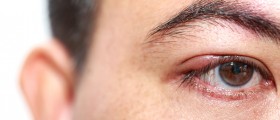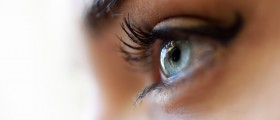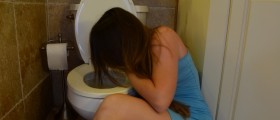Information on Subconjunctival Hemorrhage
Conjuctiva is a transparent membrane that is very moist and thin, and it covers the insides of the eyelids and the white part of the eye. The white part of the eye is medically referred to as the sclera. The conjunctiva serves as the protection of the eyeball. Numerous little blood vessels in the conjunctiva are so small that they are barely visible.
When the eye suffers from an inflammatory condition, the vessels grow bigger and become visible. The blood vessels are very fragile, and when their walls break, it causes a medical condition known as subconjunctival hemorrhage.

The condition can be easily recognized by a patch on the sclera.
- Traumatic incidences of SCH have risen secondary to the increased use of contact lenses as well as the number of people undergoing ocular surgeries. Contact lens wearers have a higher tendency to have conjunctivochalasis, pinguecula, and superficial punctate keratitis. These conjunctival diseases can cause increased inflammation through dryness and friction between the lenses and conjunctiva itself as well as a possible disruption of tear flow. Material defects and surface deposits in hard lenses, as well as defects at the rims with prolonged use of disposable contact lenses, can promote SCH.
- Ocular surgeries, especially in patients on anticoagulation, increase the risk for SCH. Cataract surgery, refractive surgery, local anesthesia such as sub-Tenon's injections can potentiate SCH.
- Nonaccidental trauma should be considered in infants who present with bilateral isolated subconjunctival hemorrhages especially if they are associated with facial petechiae. Traumatic asphyxia syndrome which is caused by prolonged compression of a child's upper abdomen and chest can cause sudden severe venous congestion. Conversely, SCH in newborns can be normal after a vaginal delivery with the estimated incidence of 1-2%. The mechanism is the same as above however uterine contractions provide the compression.
- The biggest risk factor for spontaneous SCH is hypertension and other vascular disorders like diabetes and hyperlipidemia. These diseases can cause blood vessels to become fragile and spontaneously rupture. Hypertension has been shown to be the major risk factor for SCH regardless of whether the blood pressure is controlled by medication. Spontaneous SCH has also been shown to be a predictor of hypertension if shown to be high on initial presentation subsequently at a 1 and 4 week follow-up.
- Subconjunctival hemorrhages, in general, do not have any gender discrepancy. However traumatic SCH was shown to be more prevalent in young males most likely related to performing heavy work and tendency to do more aggressive activities. The rate of spontaneous vs. traumatic varies depending on the population characteristics themselves. One study showed the incidence rate of non-traumatic SCH to be higher in women with a men to women ratio of 0.8. It is with a wide consensus that spontaneous SCH increases with age, especially after the age of 50.
- Histopathologically, the hemorrhage itself occurs between the conjunctiva and the episclera. Specifically, the blood elements are found in the substantia propria. The eye may turn blue and yellow as the hemoglobin and other blood elements break down similar to a bruise.
- Generally, there is no treatment indicated for SCH unless associated with a certain serious condition. The blood is typically resorbed over 1-2 weeks depending on the amount of extravasated blood. Recovery may take up to 3 weeks if patients are on anticoagulation. Ice packs and artificial tears can be utilized to minimize tissue swelling and provide some relief of discomfort respectively. Emergent ophthalmology consultation is warranted if SCH occurred via trauma and intraocular or additional retinal trauma is suspected. Dilute brimonidine and oxymetazoline have been indicated to improve patient comfort and decrease the incidence of SCH after intravitreal injections.
- SCH offers a good visual prognosis after resolution. Vision is generally not impaired. The recurrence rate for spontaneous SCH is about 10% without identifiable risk factors and higher if patients are taking anticoagulant or antiplatelet therapy.
Causes and Treatment
In most cases of this condition, it is a spontaneous occurrence happening without obvious cause. Quite often, subconjunctival hemorrhages occur in the morning, upon awakening. There are a few factors that may be possible causes for the occurrence of a subconjunctival hemorrhage.
These may or may not include sneezing, certain different types of medical disorders, coughing, bleeding disorders, straining, high blood pressure, vomiting, injuries, and eye rubbing. Other causes may include certain types of eye infections, traumatic injuries to the eye or the head, eye surgeries, and eyelid surgeries.
Multiple occurrences of subconjunctival hemorrhages require immediate medical attention. Other situations require professional medical care. Those can be occurrences of hemorrhage in both eyes at the same time and hemorrhages that do not heal on their own after two weeks. If the condition gets accompanied by bleeding gums or easy bruising, one must seek immediate professional medical attention.
One should visit the doctor at once if experiencing subconjunctival hemorrhage with painful sensations, traumatic injuries to the eye, blurry vision, high blood pressure, double vision, bleeding disorder, or difficulty seeing.
The most common symptom of the condition is blood that covers the white portions of the eye. Painful sensations only occur in some rare cases. Sometimes a person may experience a sense of fullness under the eyelid or a slight irritation of the eye. The hemorrhage usually covers only some parts of the white portions of the eye, but in some rare cases, it may cover the entire white part of the eye.
It should be mentioned that in this condition no blood actually exits from the affected eye. The hemorrhage gradually decreases in size as the blood gets absorbed. This medical condition does not require any medical treatment as it usually heals on its own.
- www.nhs.uk/conditions/red-eye/
- www.mayoclinic.org/diseases-conditions/subconjunctival-hemorrhage/symptoms-causes/syc-20353826
- Photo courtesy of Daniel Flather by Wikimedia Commons: commons.wikimedia.org/wiki/File:Subconjunctival_hemorrhage_eye.JPG

















Your thoughts on this
Loading...